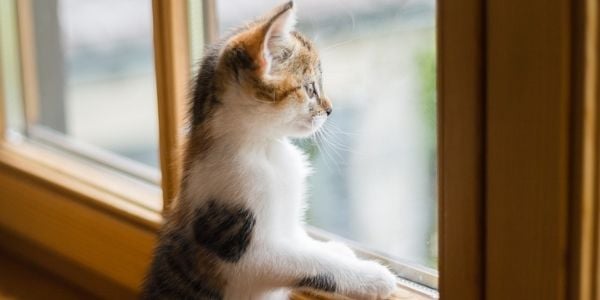 We all love fresh air, particularly city dwellers who are, more often than not, stuck in apartments with no backyards and few outdoor spaces.
We all love fresh air, particularly city dwellers who are, more often than not, stuck in apartments with no backyards and few outdoor spaces.
So, opening our windows is practically a necessity or at least a desirable experience in the warmer months for humans and pets.
However, as we all know, cats love to bathe in the sun streaming through windows and often perch precariously on window ledges enjoying the breeze, watching and listening to the birds, and activity outside.
Without window protection, this can and does often lead to catastrophe. While high-rise syndrome happens to cats more frequently, it does happen to dogs.
High-rise syndrome refers to a collection of traumatic injuries that a pet may sustain when they fall from a height. More about this below.
Animals can survive falling from great heights, but the outcome is often disastrous when not fatal and leads to long recovery times due to the complexity of the injuries.
Skip to Section:
How to Prevent Falling
Do Cats Always Land on Their Feet?
Can a Cat Get Down from a Tree?
How to Prevent Your Cat From Falling Out Windows & Off of Balconies
Fortunately, this potential tragedy is easily preventable. Cats often wind up in this predicament by having access to open windows, ledges, patios, and balconies. Limiting access to these elements is the best way to prevent these potentially disastrous scenarios.
Window Openings
Limit Openings:
- If possible, only open the top portion of your windows rather than the bottom – only if you have very high windows outside your cat's jumping range. Also, be aware of furniture, bookcases, and other launch points within about 7 ft of the window. Remember, cats can move through the air vertically and horizontally.
- Or open no more than 1–2 inches if absolutely necessary and lock the opening.
To prevent double-hung or sliding windows from opening further, you can use a stopper like the one featured below or a suction cup window stopper. Or one for crank-out windows.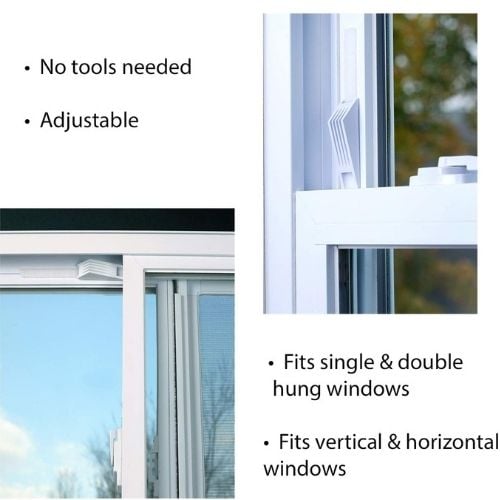
Check Screens:
Some screens might pop out easier than you think.
A few years ago, a colleague tested their screens, and this is exactly what happened. So, each year when the weather makes you want to start opening your windows back up, be sure to check the stability of your screens first.
You want to check not only the fit of the screen frame within the window opening but also the screen material within the screen frame itself. That screen material can easily start to pull away from the frame or even rot over time, making it extremely easy to tear. It’s also recommended that, even if your screens fit well, you still take extra measures to secure them.
A cat can generate a lot of force if they run and jump at something like a bird on the other side of that screen or try climbing it. Screwing the screen frame directly into the window opening is an option, as long as you still have safe exits in case of an emergency.
You can get creative and use decorative wire or aluminum mesh to cover your window screens or the bare window openings. You'll just need to use screws or rivets to attach it to the inside of your windowsill. Or you could create beautiful window shutters, like the ones featured here.
If you're in an apartment building where you can't control the quality of the screens or how well they fit, you may want to install a guard in front of the window like this one that's made for preventing children from falling through open windows. Just make sure you leave as little room as possible between the windowpane and the guard so your cat can’t slip between them. This could happen with windows that have a deep well or ledge if the guard attaches to the outside and not the inside of the window opening.
Close Windows:
Be sure to close all windows before leaving your home and/or before making loud noises such as vacuuming etc., to avoid startling your cat, especially if they are perched on a window ledge at the time.
If you don’t have air conditioning, ensuring you have a safe set-up so that your windows can be kept slightly ajar in addition to a functional screen is important (see suggestions above). This is to ensure your cat does not overheat while you are out but remains safe inside your home, unable to escape or fall from any windows. You must ensure the window cannot be opened wide enough for even a small cat or dog to fit through.
Balcony Safety for Cats
Keep cats off open balconies and patios, and keep the doors tightly shut at all times. To be extra safe, in case there's an accidental outing onto the balcony, you can install netting along the railing. We still don't recommend leaving your cat out on a balcony, even with this level of security, as they can still jump onto and over the railing. Screen doors leading to the balcony should be fine as long as the screen is very secure, has no rips or tears, and is made of strong material that your cat can't use their nails to rip into, and the door can be latched so your cat can’t slide it open.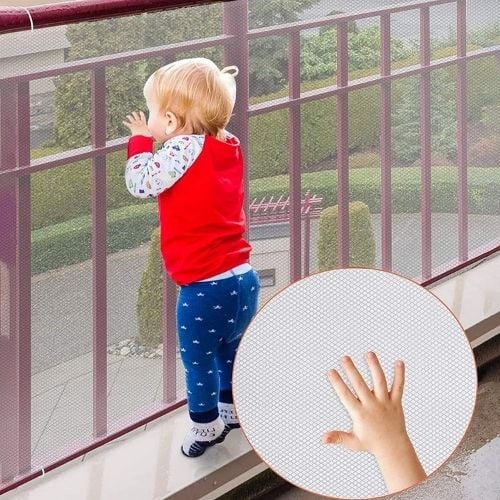
Catios
If you're able to, consider building or buying a screened enclosure “catio” to give your cat a safe space to experience the outdoors.
Our friends at Feline Behavior Solutions all have homemade catios for their cats. Here are two of them. Pretty spectacular!

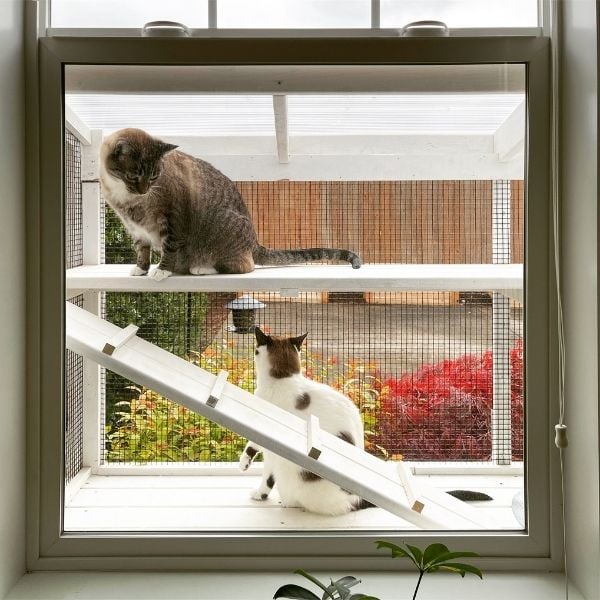
High-Rise Syndrome: Cats Falling Out of Windows
New York City, one of the largest cities in the world, with arguably some of the tallest apartment buildings, had 132 cats fall from high heights over a period of 5 months in the 1980s. They were treated at the Animal Medical Center, and the term "High-Syndrome" was coined.
Not surprisingly, cases of high-rise syndrome typically spike during warm weather months when windows tend to be open and outdoor spaces like balconies and patios are used more often.
Just this summer, a colleague of mine at one of New York’s busiest emergency pet hospitals told me they treated more high-rise cases this past summer than in the past two summers combined, likely due to the increase in people having to stay inside with their pets.
The Syndrome
High-rise syndrome refers to a collection of traumatic injuries that a cat (or dog) may sustain when they fall from a height.
The injuries sustained depend on several factors: (1) how far the cat fell, (2) in which position they landed, and (3) on what surface they landed on.
Oddly enough, cats that fall from heights over 7 stories and up to 20 stories typically suffer from fewer and less severe injuries than those that fall from heights from lower stories. Cats that fall from lower heights, such as heights between 2–7 stories, typically sustain more severe injuries. This is because, with a shorter distance to fall, the cat doesn’t have enough time to correct their body position in the air. The fall needs to be high enough to allow the cat to twist, but ideally not too high that it causes severe traumatic injury.
Cats have unique flexibility and uncanny ability to right their body while falling, known as the righting reflex, where they’re able to twist themselves around so they are facing with their feet facing in a downward landing position. Once in this position, they are able to spread their bodies out like a mini parachute which helps to decrease the speed of their fall. Additionally, their ability to relax as they fall helps decrease (lessen) the impact on landing. Check out the video below to see this in slow motion.
Risk factors
Cats who live in apartments or multistory homes with unscreened windows, patios, or balconies are most at risk.
Some people trust and believe their cat won’t go out an open balcony door or leap over the edge. However, the old adage "curiosity killed the cat" still applies. Cats love to investigate new things, sounds, etc. They're natural hunters. So, they will likely want to chase birds, squirrels, and anything else they see outside! They’re not always thinking about logistics when that predatory instinct kicks in and takes over. And who’s to say cats fully understand how high up they actually are?
Additionally, cats can and have been known to fall from a high location while they are deep in REM sleep. Just like people, cats can go into a phase of deep sleep where they might even dream! These dreams can cause them to move around, and this movement can then cause them to suddenly fall from wherever they are resting. They can also wake up from a dream feeling disoriented and lose their balance, resulting in a fall.
Older cats are not as agile, and younger cats/kittens can be curious and hyperexcitable resulting in frequent falls.
Injuries from Falling from a Window or Balcony
Although many different injuries to cats and dogs are possible, the most common include:
- Chest and lung injuries
- Lung bruising (contusion)
- Collapsed lung(s) (pneumothorax)
- Broken bones
- Particularly limb fractures
- Rib fractures
- Facial bone fractures (including the jaw)
- Broken teeth
- Head trauma
- Shock
- Joint dislocation
- Internal organ rupture
- Urinary bladder rupture
- Gall bladder rupture
- Splenic rupture
- Brain swelling
- Internal bleeding
Occasionally, the full extent of a cat’s injuries may not be evident until 48–72 hours after the accident has occurred. This is because contusions of the lung (also known as ‘bruising’) may take that long to reach their peak extent of damage.
What to Do if Your Cat Falls Out of a Window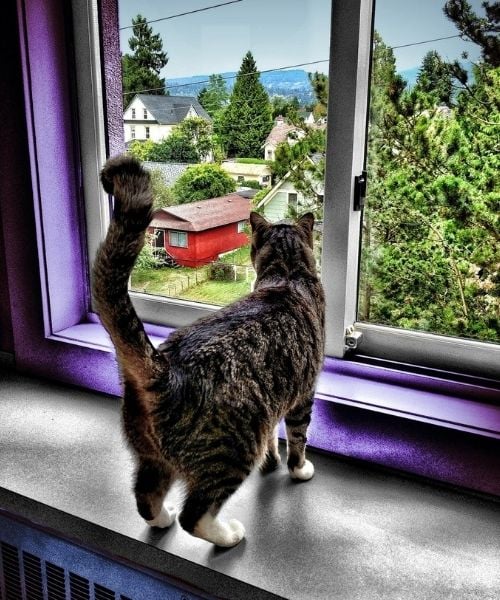
If your cat has fallen from a height, you should take them immediately to a veterinary hospital, ideally an emergency facility that can evaluate them ASAP for critical injuries. Amazingly, many cats can and do survive after falling and do quite well. This is typically after intensive care and treatment, where they are often hospitalized for several days.
If your cat has survived a fall, never assume that they're not injured, even if you don't see any obvious issues. As mentioned above, their injuries could take 2–3 days to become noticeable.
There is no at-home treatment, and there is a high likelihood that many cats are in extreme pain (whether they show you or not) and may even be in shock. Please don't try to give them ANY human pain or other medications; not only are they likely to be highly toxic to your cat, but your cat may have a broken jaw or other life-threatening internal injuries, and delaying their treatment just causes them to suffer longer. The best thing you can do is to take your cat to a veterinarian immediately.
Do Cats Always Land on Their Feet?
As the old wives tale goes, we have assumed for a long time that our feline friends always land on their feet. However, this is not entirely true. When they fall, they don’t ALWAYS land on their feet. This depends on several factors, such as the height of the fall, if they were startled before falling, were asleep, the cat's weight, etc. They need time to right their body as they fall, and if they don't, they may not land on their feet. See this "right aligning" in slow motion in the National Geographic video below.
Cats that fall from lower heights, such as heights between 2–7 stories, typically sustain additional and more severe injuries than those cats that fall from greater heights (over 7 stories).
Why Cats Need Help Getting Out of Trees

Technically, most of the time, they don't need help, but you may not want to wait for them to come down on their own, especially if they're an indoor cat who escaped.
The cat might be:
Scared. They may actually be afraid that they are up so high. As an indoor cat, there is unlikely to be anything that high in their home, and therefore, they might not know how to climb down from such a height.
Declawed. If they are declawed, they may not be able to safely climb down, as their claws are present for a reason, to help them grip surfaces such as trees to climb up, not just to destroy your favorite couch.
Not know how to climb down the right way. Cats are supposed to climb down backward. Yep, butt first. This is because their retractable claws are curved forward, meaning that they are designed to hook into a surface such as a tree and help them hold on, but instinct tells them to go down headfirst. Moreover, their hind legs are stronger than their front, which makes them agile climbers going up, but that same physiology makes it difficult to maneuver down. So those that can’t figure this out may panic and stay up the tree!
And finally, most cats jump from high places rather than climb down and if it’s too high, they’ll just stay up there!
If you need help with getting your cat out of a tree, your local fire department shouldn't be your first call. It's been known, that in smaller communities they may help, but calling a tree-climbing expert is probably the solution. This website has resources to call in most states and even countries around the world, https://www.catinatreerescue.com/faq/. Good luck! And if you have any tips or stories to share, please do so in the comments section below.



